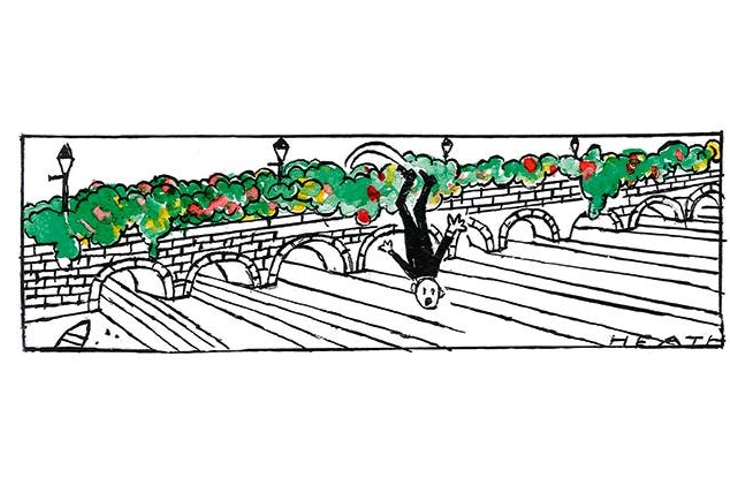The Garden Bridge project, loved by Joanna Lumley and no-one else, has been roundly criticised by Dame Margaret Hodge in a report for the Mayor of London. In her review, Hodge says it would be ‘better for the taxpayer to accept the financial loss of cancelling the project’, a perspective that the Garden Bridge Trust have today condemned, calling it ‘very one-sided’. With £40 million already spent and an estimated £200 million required to complete the project, now seems a good time for City Hall to debate Hodge’s findings. But beyond the question of cash, we should also be interrogating whether the traditions of the city are being undermined by this prospective white elephant.
The great infrastructure projects of London’s history have always combined aesthetic grandeur with genuine utility. Take for example Joseph Bazalgette’s sewage system, built in the 1860s following the chaos of the ‘Great Stink’. Bazalgette’s project was an unrivalled feat of plumbing, mostly taking place in crafted caverns below the city, but also rising in majestic pumping stations that look more like cathedrals. The Victorians always had an eye for the ornate, but more recent projects have the same combination of design and practicality. The London Orbital, for example, built from the 1970s, has its roots in a plan by Edwin Lutyens, and cleaves its way through London suburbs in a way that mirrors the Thames.
Since 1900, we have opened 11 bridges over the Thames, and renovated a 12th (London Bridge). They come in varying degrees of majesty – Chelsea Bridge is particularly fine, Twickenham Bridge is particularly rubbish – but it is hard to claim that they have been insufficiently regular in their appearance. Indeed, in 2002, the Millennium Bridge was opened, fulfilling London’s quota of frivolous pedestrian bridges for the foreseeable future. Despite its wonky design and construction, and perhaps only because the Blackfriars Railway Bridge, opened in the late 19th century, had already destroyed the eastward view from that point, the Millennium Bridge has now largely been accepted by Londoners. But where the Millennium Bridge is a slim, to the point of flimsy, structure, the Garden Bridge design is deep, wide and with a forest taller than a double decker bus perched on top.
The Garden Bridge’s proposed route runs from Temple to
the South Bank, which is undoubtedly a busy area, but already served by Westminster Bridge, Waterloo Bridge and Blackfriars Bridge. If you stand on Waterloo Bridge and look east, your view is already obscured by Blackfriars Bridge, which blocks sight of that trademark kink at Wapping (although that view would also be blocked by the Southwark, London and Tower Bridges, were Blackfriars to mysteriously disappear). You can no longer stand on the historic bridges of London and look down the Thames because, even on the clearest of days, all you see is bridge after bridge after bridge.
The problems with the Garden Bridge stretch far beyond its appalling cost. It takes a commodity London has in abundance – green space – and replicates it, fractionally, over a commodity that London has in increasing scarcity – an undeveloped stretch of river. The public debate shouldn’t end with Margaret Hodge’s well-reasoned damnation of the project – we should also be considering futures for the city where we do not simply add development upon development, but subtract where they are no longer justifiable. Anticipating a future where Londoners are not so dependent on cars, we should consider whether we need a series of bridges less than half a mile apart. It seems a radical suggestion, but rather than adding bridges, we should start taking them away.







Comments